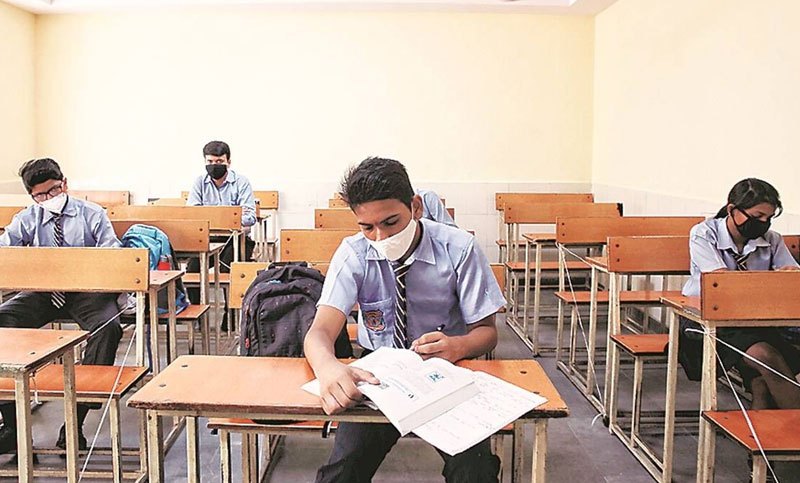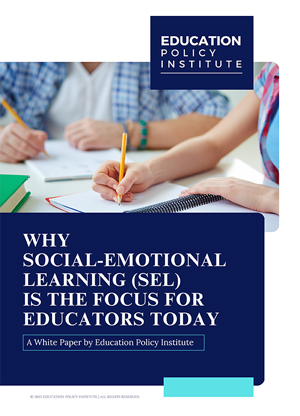When schools across the United States closed in March and April following the COVID-19 outbreak, the focus was on how schools would build a functioning online educational system within a quick timeline. While most schools across the country were able to formulate a plan to carry out online learning for the rest of the school year, the impact and implementation of these plans revealed the broken structure of the U.S. public school system.
The American K-12 school system refers to the publicly funded education system in the United States. It includes 13 years of education, from kindergarten to 12th grade. Each of these years corresponds to a certain grade level, from K-12.
Kindergarten
This is usually the first year of formal education, for children around five years old.
Elementary School
This is usually from grades 1-5, though it can sometimes extend to grade 6 based on the location. Children in elementary school are usually between the ages of 6-10 or 11.
Middle School (also called Junior High in some regions)
This includes grades 6-8, serving students who are 11-13 years old. In some districts, middle school might be grades 7-8 after a K-6 elementary school structure.
High School
This includes grades 9-12, serving students who are approximately 14-18 years old. Each grade level has a certain name: 9th grade is often referred to as "freshman year," 10th grade as "sophomore year," 11th grade as "junior year," and 12th grade as "senior year."
At the end of high school, students will receive a diploma, provided they meet the graduation requirements set by the state or district. This includes earning a certain number of credits from passing different programs and may also need passing the standardized tests.
In addition to the standard curriculum, students can also enrol in Advanced Placements (AP) or International Baccalaureate (IB) programs, which can potentially earn them college credits while still in high school.
Firstly, the widespread closing of schools has revealed the gross inequalities that have always existed in the lives of impoverished families and children. Suddenly, we see front page stories and news articles on topics such as uneven Internet and technology access, food insecurity, and limited access to mental health services which affect underprivileged school students across America.
According to the EdWeek Research Center, in high schools where more that 75 percent of students are from low-income families, 55 percent of students do not have a digital learning device at home to use for remote learning. District leaders and teachers from school systems where more than 75 percent of students qualify for free or reduced-price lunches reported that more than half (59 percent) of their students had to share digital devices with parents, siblings, and other family members and/or friends in order to complete their schoolwork during the school building shutdowns. That figure is more than double the percentage for district leaders and teachers from school systems with 25 percent or less of their students living in poverty.
It’s almost as if the entire country is just now realizing the uncomfortable realities of life beneath the surface for socioeconomically disadvantaged students. The pandemic has shined a harsh light and laid these inequalities bare in the face of students who won’t be able to go to college because their family’s income has been wiped out or because the digital divide is making accessing to guidance counselors near impossible.
Students with disabilities, English language learners, and foster youth are likewise without necessary supports. While schools have some potential to act on these issues and serve families in a limited capacity, they don’t have magical powers to triumph over hunger, untreated medical problems, lack of technology, and totally unequal access to enrichment that prevent students from achieving educational success. The pandemic has uncovered the underlying truth that no one wanted to hear – the best predictor of your educational success is still your socioeconomic status. That is not what America is supposed to be.
Secondly, the COVID-19 pandemic has shown that schools and teachers across the country are unprepared to implement online learning models for their students. In a survey of 1,200 K-12 teachers, over half of them (56.7 percent) say that they are “not prepared to facilitate remote learning”. The fact that even after so many months of schools being closed, teachers still feel that they are not prepared to administer remote learning, shows that schools have done a poor job transition to online learning. When asked what things they plan to do if schools reopen in the fall, more than 2/3 of teachers (66.8 percent) said that they planned to share documents.
Only 1 in 3 (34.1 percent) said that they would use video recordings and a mere 12.7 percent said that they would live stream their video lessons. If teachers are primarily planning to share documents with their students with no accompanying instruction, they are probably not prepared for the realities of continuous online teaching and learning.
Just like students, this is the first time that teachers around the world are experiencing school closures at this scale, and they will need to be guided through the process of reopening by schools. Schools cannot just shoulder all responsibility for decision making on teachers, because that will put an unnecessary burden on them and impact the learning of students. To prevent this from happening, schools need to empower teachers with the resources and guidance they need to effectively manage remote learning in the following ways:
- Ensure that teachers’ voices are heard in policy and planning - Schools should facilitate dialogue between teachers to develop effective strategies for remote learning. Teachers understand the diverse needs of their students and can provide valuable inputs which help improve the remote learning experience for them.
- Support teachers instructionally to ensure teaching effectiveness - Schools should host training programs for teachers and clearly outline what is expected from them as they teach in a remote learning environment. They should be taught how to operate the new technologies and resources they will be using and ensure that they are not in the dark about how they will operate.
- Recognize the importance of teachers’ psychological and emotional well -being - The COVID-19 pandemic may result in psychological distress for teachers, as they work to develop effective solutions for teaching during these uncertain times. This can lead to burnout and result in high rates of absenteeism and even in teachers losing their jobs. To support teachers, schools should help teachers cultivate important aspects of well-being using simple exercises drawing upon the latest findings in neuroscience, psychology and traditional contemplative perspectives. Schools should also form specialized counselling units to support teacher well-being and provide them access to the mental health resources they need.
To ensure that all students are able to stay on track with their learning and are able to succeed in a new learning environment, schools and governmental bodies need to take steps to ensure equitable access to learning resources and empower teachers with the tools and guidance they need to administer remote learning effectively.





